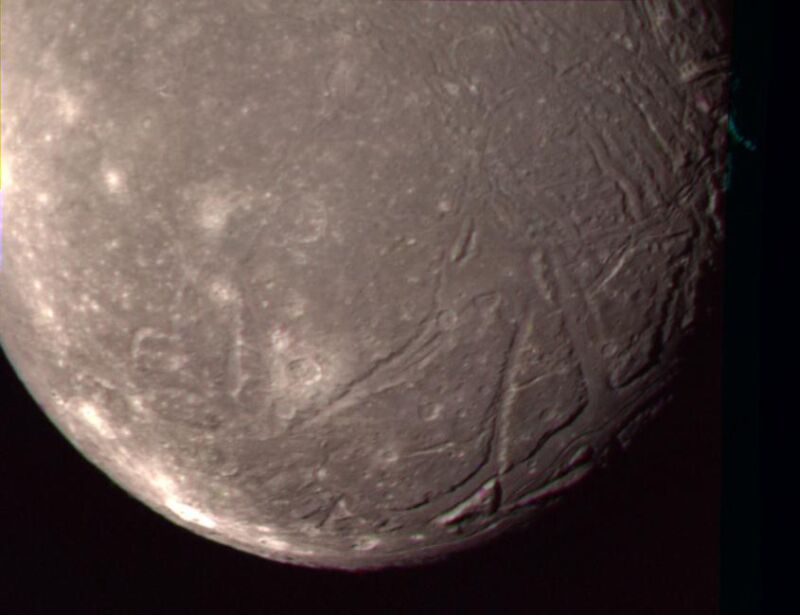

Scientists say they have found more moons with oceans in the Solar System
source link: https://arstechnica.com/science/2023/05/as-many-as-four-moons-around-uranus-may-have-oceans-below-the-surface/
Go to the source link to view the article. You can view the picture content, updated content and better typesetting reading experience. If the link is broken, please click the button below to view the snapshot at that time.

Water water everywhere —
Scientists say they have found more moons with oceans in the Solar System
NASA probably is about to get serious about exploring the Uranian system.
Eric Berger - 5/5/2023, 3:18 PM

In recent decades, NASA has sent large spacecraft—Galileo and Cassini, respectively—to fly around Jupiter and Saturn to explore the dozens of moons that exist in those planetary systems.
The spacecraft investigated all manner of intriguing moons, from little radiation-saturated hellholes to a world covered in volcanoes. But the most consistently interesting discovery made by these probes was that Jupiter and Saturn are surrounded by small and large moons covered in ice, possessing large water oceans below, or both. This was exciting because where there is water in its liquid state, there is the possibility of life.
In response to these discoveries, NASA is planning to launch a mission to Europa, an ice-encrusted moon in the Jovian system, as early as 2024. Another mission may launch to Saturn's moon Titan a few years later, where there are oceans of liquid methane on the surface. And just last month, the European Space Agency launched a spacecraft, Juice, to explore several icy moons at Jupiter.
Now, NASA may need to add the moons of Uranus to its exploration hit list. Besides being known for its funny name and its brilliant cyan shade, Uranus has at least 27 moons. And they're pretty intriguing, too.
The space agency has only ever flown one spacecraft, Voyager 2, by the seventh planet in our Solar System. The Voyager spacecraft flew by Uranus a long time ago, in 1985. But in light of the discoveries made by the Cassini, Dawn, and New Horizons spacecraft, scientists have been revisiting the data collected by Voyager in addition to the data obtained by ground-based telescopes.
AdvertisementThis has led NASA scientists to conclude that four of Uranus’ largest moons—Ariel, Umbriel, Titania, and Oberon—probably contain water oceans below their icy crusts. These oceans are likely dozens of kilometers deep and probably fairly salty in being sandwiched between the upper ice and inner rock core. These inner cores are likely producing enough heat from radioactive decay to create layers of liquid water, the scientists say. Additionally, chlorides, as well as ammonia, are likely abundant in the oceans of the icy giant’s largest moons and may be helping to keep them unfrozen.
The good news is that NASA is probably about to get serious about exploring the Uranian system. About a year ago, the National Academies met to prioritize planetary science, astrobiology, and planetary defense missions in the next 10 years, and Uranus topped the list.
A "Uranus Orbiter and Probe" would, the scientists said, transform our knowledge of ice giants in general and the Uranian system in particular through flybys and the delivery of an atmospheric probe. A launch within the period 2023 to 2032 was deemed viable on currently available launch vehicles.
Now, scientists seeking to explore Uranus have another great reason to send a large spacecraft there—further exploration of icy moons. After all, no one knows what lies in Uranus.
What, you thought I was going to write this whole story without making that joke?
Recommend
About Joyk
Aggregate valuable and interesting links.
Joyk means Joy of geeK